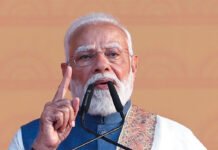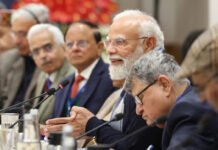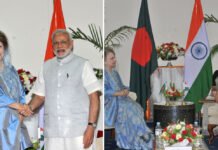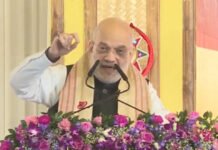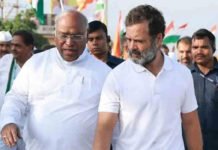INVC NEWS
New Delhi : The recent state elections in Madhya Pradesh (MP), Chhattisgarh (CG), and Rajasthan have marked a significant shift. The Bharatiya Janata Party (BJP), employing a strategic move by fielding several Members of Parliament (MPs) in state assembly elections, has appeared to turn the tide in its favor. This tactical decision, unique in its execution, has not only showcased the party’s strength but also its deep understanding of the electoral dynamics.
BJP’s Masterstroke in Madhya Pradesh
Madhya Pradesh, with its 230 assembly seats, has always been a battleground state, witnessing a direct face-off between the BJP and Congress. Recognizing the state’s critical importance, the BJP deployed seven of its sitting MPs to contest in the state assembly elections. This move was seen as an indication of the party’s commitment to win the state at all costs.
One of the prominent names was Narendra Singh Tomar, a central minister, who contested from the Dimni assembly seat. The seat, previously held by the Congress, saw Tomar leading with a significant margin in the early trends. Similarly, Prahlad Patel, another central minister, was fielded from Narsinghpur. This seat, under BJP’s control since the 2018 elections, showed Patel leading by a comfortable margin.
Rajasthan: BJP’s Forward March
In Rajasthan, a state known for changing its government every election for the last three decades, the BJP made significant inroads. By fielding seven MPs in the assembly elections, the party demonstrated its aggressive approach to dethroning the incumbent Congress government. This strategy paid dividends as the BJP led in over 115 seats, while Congress trailed behind.
Notable among the BJP candidates was Rajyavardhan Singh Rathore, a popular figure, contesting from the Jhotwara assembly seat in Jaipur. His overwhelming lead in the early counts was a testament to his popularity and the party’s strategic placement. Diya Kumari, another prominent BJP leader and a member of the Jaipur royal family, contested from the Vidyadhar Nagar seat and secured a decisive victory.
Chhattisgarh’s Political Landscape: BJP’s Calculated Risk
Chhattisgarh, with its 90 assembly seats, was another critical state where the BJP decided to play its parliamentary card. Four sitting MPs were fielded, each with their unique voter base and influence. The party’s decision to involve central figures in state politics underlined its intent to regain power in a state ruled by Congress.
Renuka Singh, a central state minister, contested from the Bharatpur-Sonhat seat and was leading in the early trends. This move was seen as an attempt to capitalize on her popularity and ministerial influence. Similarly, Gomati Sai, an MP from Raigarh, was fielded in the Pathalgaon assembly seat. Though trailing initially, her candidacy signified the party’s focus on fielding experienced leaders to secure victory.
Analyzing BJP’s Parliamentary Strategy: A Game-Changer?
The BJP’s strategy of fielding MPs in state elections is not just a mere political maneuver but a reflection of its broader vision for electoral dominance. This approach demonstrates the party’s confidence in its leadership and its ability to resonate with the grassroots level voters. The results of these elections are a clear indicator of the BJP’s expanding influence and its ability to adapt to regional political dynamics.
Moreover, the selection of these MPs was not random but a carefully crafted strategy, considering their popularity, influence, and track record. The party’s ability to mobilize its resources and leaders at the state level highlights its organizational strength and strategic foresight.
The Road Ahead: Implications for Indian Politics
The outcomes of these state elections, especially with the BJP’s strategic use of its MPs, have significant implications for the future of Indian politics. It suggests a new trend where national-level leaders are actively involved in state politics, blurring the lines between state and national political strategies. This approach could potentially reshape the political landscape, influencing how parties approach future elections.
Furthermore, the success of this strategy could encourage other parties to adopt similar tactics, leading to a more integrated approach between state and national politics. This could result in more dynamic and competitive political contests, with national implications being increasingly felt at the state level.
In conclusion, the BJP’s strategic decision to field MPs in state assembly elections has not only changed the course of the elections in MP, CG, and Rajasthan but also set a new precedent in Indian politics. This move, reflecting the party’s strategic acumen and electoral savvy, has redefined the rules of political engagement and opened new avenues for political contestation in India.




